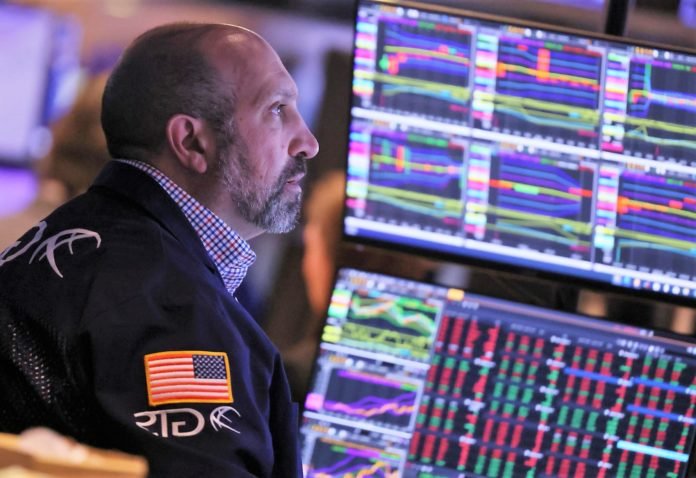In recent times, the financial landscape has been marred by the sudden collapse of two major banks, namely Silicon Valley Bank (SVB) and Signature Bank. The aftermath of these incidents has created a sense of urgency among investors and depositors, with many speculating that the worst is yet to come. Although some market analysts suggest that these failures do not amount to a Lehman-style crisis, other experts warn of a high risk of contagion that could spread like wildfire across the entire banking industry. In this article, we explore the perplexing reasons behind these failures, their potential impact on the banking industry, and what depositors and investors can expect moving forward.
The Root Causes of the Recent Bank Failures
The fall of Silicon Valley Bank and Signature Bank can be attributed to two key factors. First, the banks’ close ties to the tech industry meant that they were vulnerable to the same market fluctuations as their tech counterparts. Second, significant unrealized losses in their bond portfolios exacerbated their financial woes. The impact of these failures was immediately felt, with the stock price of various regional banks, such as First Republic, PacWest, Western Alliance, and Charles Schwab, plummeting on Monday. This downward trend has set alarm bells ringing, prompting investors to worry about the potential for a cascade of bank failures.
The Threat of Contagion in the Banking Industry
The collapse of Silicon Valley Bank and Signature Bank has caused a ripple effect across the banking industry, raising concerns about the possibility of contagion. Investors fear that these failures could trigger a domino effect, causing more banks to fail in the near future. The simultaneous drop in stock prices of multiple regional banks on the same day as the collapse of Silicon Valley Bank and Signature Bank suggests that investors are already anticipating this possibility. William Isaac, the former chairman of the Federal Deposit Insurance Corporation (FDIC), has warned that the situation could lead to another banking crisis, similar to the ones experienced in the 1980s and 1990s, during which the FDIC handled the failure of over 1,600 banks.
The Speed of Bank Failures in the Digital Era
One intriguing aspect of the recent bank failures is the speed at which they occurred, particularly in the digital banking era. Customers withdrew a staggering $42 billion in deposits from SVB on Thursday alone, driven by panicked messages on social media and from prominent VC investors. To put this into perspective, the biggest bank run during the Great Financial Crisis saw customers cash out $16.7 billion from Washington Mutual over ten days. This lightning-fast collapse of Silicon Valley Bank has raised concerns that the same dynamic could happen to any financial institution in this digital age.
Depositors and Investors: What Lies Ahead
While depositors have been made whole in both recent failures, banks and their shareholders must brace themselves for the government to allow banks to fail without a bailout. Treasury Secretary Janet Yellen and President Joe Biden have made it clear that no bailout is forthcoming, and investors in the banks will not be protected. This means that investors must be prepared to bear the brunt of any losses incurred as a result of bank failures, and depositors must be vigilant about their bank’s financial health.
The Role of Regulation in Preventing Future Bank Failures
One potential solution to prevent future bank failures is to increase regulation in the banking industry. This could involve stricter capital requirements, limits on risky investments, and more transparency and accountability for banks. The government could also provide more resources to regulatory agencies like the FDIC to better monitor the health of banks and intervene before they fail.
The Importance of Diversification in Banking
Another way to mitigate the risk of contagion in the banking industry is for banks to diversify their investments and customer base. Banks with a narrow focus, like Silicon Valley Bank, are more vulnerable to industry-specific risks. By expanding their portfolios and customer base, banks can spread their risk and reduce their exposure to any one sector.
Conclusion: The Need for Caution in the Banking Industry
In conclusion, the recent collapse of Silicon Valley Bank and Signature Bank has brought the threat of contagion to the forefront of the banking industry’s collective consciousness. While some experts downplay the risk, the simultaneous drop in stock prices of multiple regional banks suggests that investors are already anticipating a cascade of failures. The root causes of these failures lie in the banks’ close ties to the tech industry and significant unrealized losses in their bond portfolios. Moving forward, depositors and investors must be prepared for the government to allow banks to fail without a bailout, and banks must diversify their investments and customer base to mitigate their risks. Finally, increased regulation and oversight of the banking industry could prevent future bank failures and protect the financial health of both banks and their customers. The need for caution in the banking industry cannot be overstated, and we must take swift and decisive action to prevent further failures and protect the stability of our financial system.








